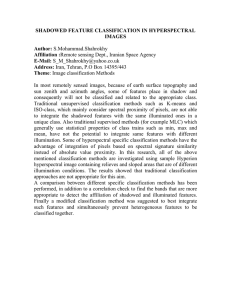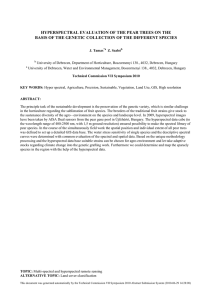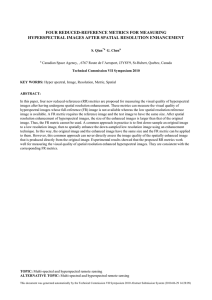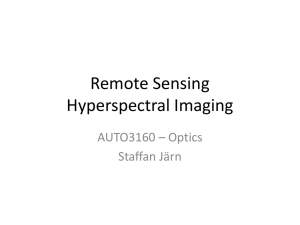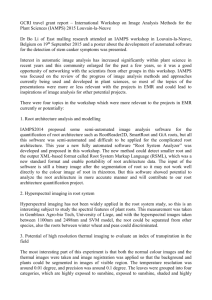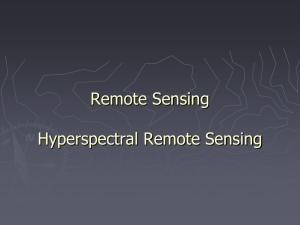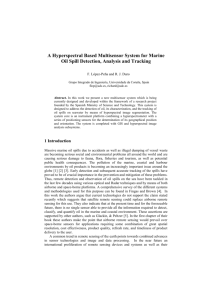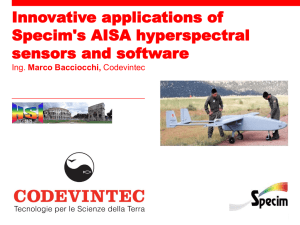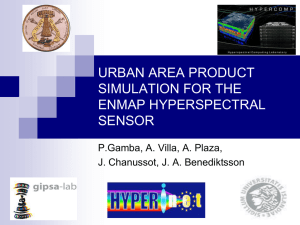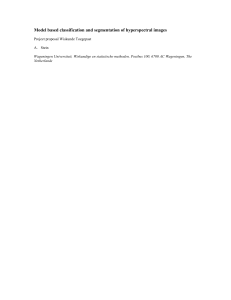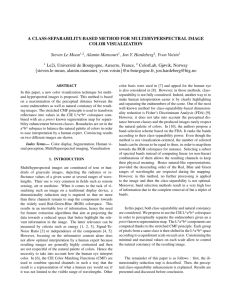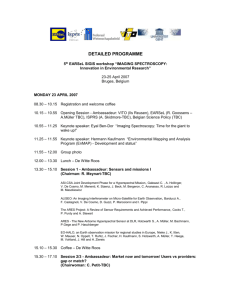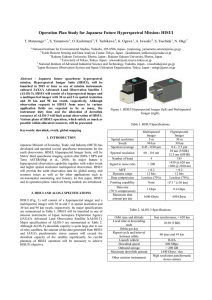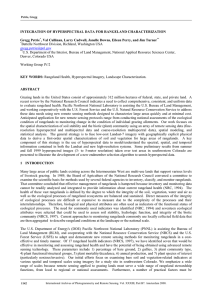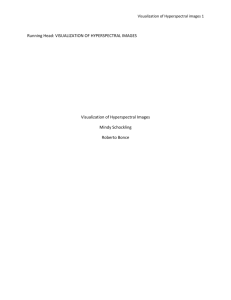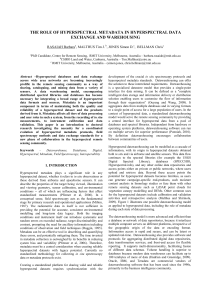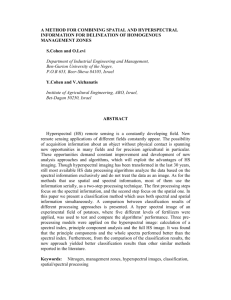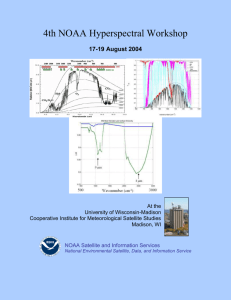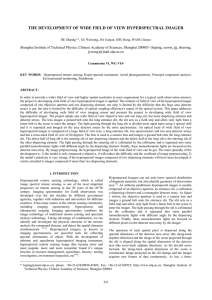Abstract
advertisement
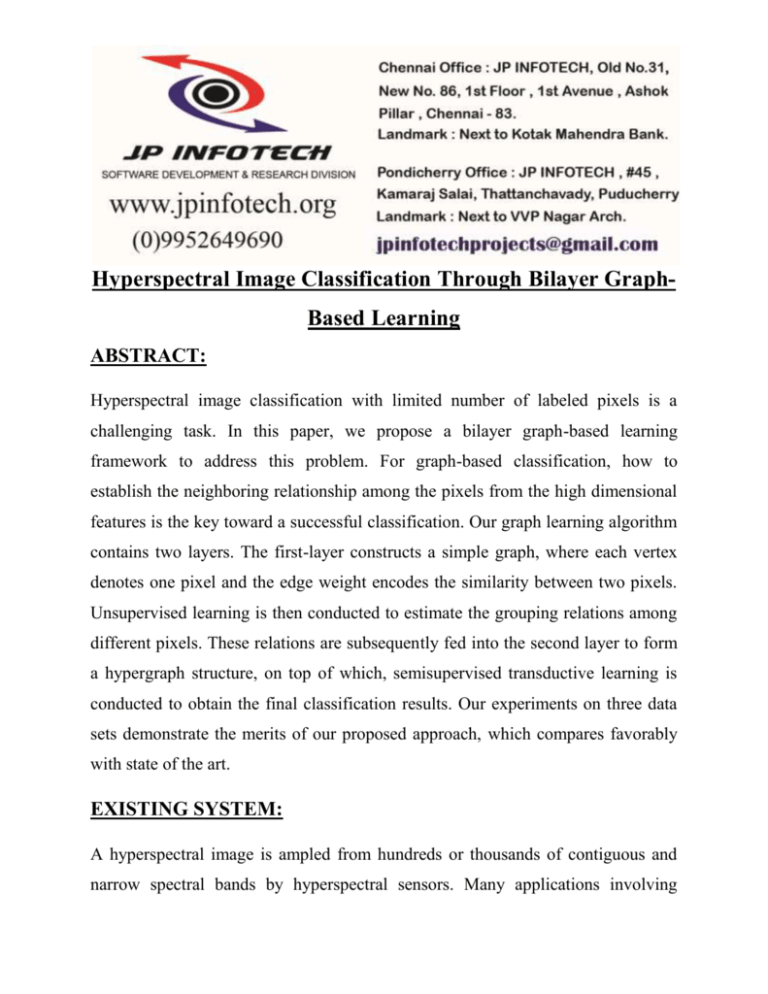
Hyperspectral Image Classification Through Bilayer GraphBased Learning ABSTRACT: Hyperspectral image classification with limited number of labeled pixels is a challenging task. In this paper, we propose a bilayer graph-based learning framework to address this problem. For graph-based classification, how to establish the neighboring relationship among the pixels from the high dimensional features is the key toward a successful classification. Our graph learning algorithm contains two layers. The first-layer constructs a simple graph, where each vertex denotes one pixel and the edge weight encodes the similarity between two pixels. Unsupervised learning is then conducted to estimate the grouping relations among different pixels. These relations are subsequently fed into the second layer to form a hypergraph structure, on top of which, semisupervised transductive learning is conducted to obtain the final classification results. Our experiments on three data sets demonstrate the merits of our proposed approach, which compares favorably with state of the art. EXISTING SYSTEM: A hyperspectral image is ampled from hundreds or thousands of contiguous and narrow spectral bands by hyperspectral sensors. Many applications involving hyperspectral image analysis are in need of a semantic classification task i.e., partition and label the hyperspectral image into different semantic regions, such as trees and beaches, which remains to be a challenging problem. There are two prominent challenges which confront hyperspectral image classification. The first one is the difficulty in evaluating the similarity of two pixels induced by the high dimensionality. A hyperspectral image contains hundreds of spectral bands and correspondingly each pixel is described by hundreds of observed values from these spectral bands. This high dimensional data leads to the difficulties on hyperspectral image analysis due to the curse of dimensionality. The other challenge is the problem of limited training samples, as it is very labor intensive to obtain large amount of pixel level semantic labels for training. DISADVANTAGES OF EXISTING SYSTEM: 1) May fail to explore this relationship among different pixels. 2) Challenges of both the complex relationship and the limited labeled samples in hyperspectral images. PROPOSED SYSTEM: we propose a hyperspectral image classification framework by using a bilayer graph based learning in this paper. This bilayer graph is composed of a layer of simple graph as well as a layer of hypergraph, which effectively exploits the underlying structure of the data. In the first-layer, a simple graph is constructed, where each vertex in the graph denotes one pixel and the similarity among vertices is determined by the feature based pairwise pixel distances. Learning is conducted on this layer to estimate the connectivity relationship among pixels. In the secondlayer, a hypergraph structure is constructed, where each vertex denotes one pixel and the hyperedges are generated by using the neighborhood relationship produced from the first-layer. Semi-supervised learning is conducted on the hypergraph structure to estimate the pixel labels to achieve hyperspectral image classification. Our experiments on three datasets validated the effectiveness of the proposed method, which compared favorably with state-of-the-art. ADVANTAGES OF PROPOSED SYSTEM: The hypergraph to capture the high-order relationships among different objects. The hypergraph structure can simultaneously explore the multiple relationships among the data, which makes it possible to be applied in the hyperspectral image classification task. SYSTEM ARCHITECTURE: SYSTEM REQUIREMENTS: HARDWARE REQUIREMENTS: System : Pentium IV 2.4 GHz. Hard Disk : 40 GB. Floppy Drive : 1.44 Mb. Monitor : 15 VGA Colour. Mouse : Logitech. Ram : 512 Mb. SOFTWARE REQUIREMENTS: Operating system : Windows XP/7. Coding Language : MATLAB Tool MATLAB R 2007B : REFERENCE: Yue Gao, Rongrong Ji, Peng Cui, Qionghai Dai, and Gang Hua “Hyperspectral Image Classification Through Bilayer Graph-Based Learning” IEEE TRANSACTIONS ON IMAGE PROCESSING, VOL. 23, NO. 7, JULY 2014
